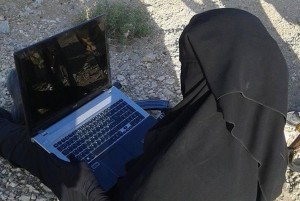Monday’s Christmas market attack in Berlin was the latest in an increasingly low-tech terrorism campaign being waged by the Islamic State and its sympathizers who favor butcher knives and trucks driven into crowds over suicide belts and booby-trapped cars — a tactical shift that has confounded American and European counterterrorism officials.
While al Qaeda relied on sleeper cells in the U.S. and Europe to carry out its mission, the Islamic State — the successor of al Qaeda in Iraq — has perfected the art of self-radicalization, according to U.S. intelligence officials.
In the past, al Qaeda sleeper cells had a semi-identifiable “demographic profile” and maintained “definite linkages” to the group’s chain of command that intelligence officers could exploit, said Nick Rasmussen, chief of the National Counterterrorism Center.
The lack of such linkages, especially by “lone wolf” attackers who were inspired by the Islamic State’s impressive online propaganda operation, has opened up “a size and scale of the [U.S.] population” susceptible to radicalization, Mr. Rasmussen said during a panel discussion in a counterterrorism symposium in September.
Al Qaeda’s focus on high-profile, 9/11-style attacks takes immense amounts of planning, communication, financing and coordination, and comes with a high risk of failure that U.S. intelligence agencies have exploited, said Michael Leiter, former director of the National Counterterrorism Center.
Islamic State planners realized they did not need to hijack a plane or plant a truck bomb in Times Square to be effective. A heavy truck or easy access to semi-automatic weapons “is all you need” to carry out an attack, Mr. Leiter said during the same counterterrorism panel discussion.
In Germany, authorities are hunting for Anis Amri, a 24-year old Tunisian suspected of carrying out the horrific truck attack on a bustling Christmas market in the heart of Berlin.
Tunisian anti-terrorism investigators have questioned the Amri family in Tunis, while German investigators continue to scour the country for any leads on his whereabouts, The Associated Press reported Wednesday.
Mr. Amri, who was denied asylum in Germany in July, reportedly had been under government surveillance for several months over suggested ties to the Islamic State, according to the AP.
His identity card was found in the cab of the tractor-trailer truck that mowed down dozens of civilians in a crowded Christmas market in west Berlin on Monday.
The Islamic State, also known as ISIS or ISIL, claimed responsibility for the attack, which left 12 dead and more than 50 wounded.
Only a month before the Berlin attack, Abdul Razak Ali Artan, an Ohio State student, injured 11 people after driving his car into a cluster of students and proceeded to stab others before campus police killed him.
Artan reportedly was self-radicalized after hearing the teachings of Anwar al-Awlaki, the U.S.-Yemeni cleric who was the spiritual leader of al Qaeda’s Yemeni branch, al Qaeda in the Arabian Peninsula. The Islamic State claimed responsibility for the attack and hailed Artan as a “soldier.”
In July, a Tunisian national was responsible for killing 86 people after driving a cargo truck through crowds of Bastille Day celebrants in the southern French resort city of Nice. The Islamic State claimed responsibility for that assault as well.
As Islamic State battlefield losses continue to mount against the U.S.-led coalition in Iraq and Syria, “low-resource, high-impact” attacks in the U.S. and Europe will likely become the norm, counterterrorism analysts say.
“We are obviously seeing terrorist networks who are under pressure. Look for low-cost, low-resource, high-impact events to try to continue to attract people to their narrative,” State Department spokesman John Kirby said Tuesday.
“We’re seeing this all around the world,” he said in an interview with CNN.
U.S. intelligence and homeland security agents have foiled numerous terrorist attacks targeting the nation, Mr. Kirby said.
“But it’s going to be very difficult to do that when one person has it in their mind that they want to kill innocent people and they will do it in a low-cost way,” the State Department spokesman said.
Dual reports by Department of Homeland Security’s office of inspector general in September pointed to potentially gaping holes in security around commercial and noncommercial trucking in the U.S.
While U.S. agencies use an “intelligence-driven, risk-based security strategy” for aviation-related threats, there is a dearth of resources to track threats beyond aviation, one Homeland Security report says.
Transportation Security Administration chief Peter Neffenger told lawmakers this year that the service spends just 3 percent of its annual budget of $7.3 billion on “surface transportation security initiatives.”
The American Trucking Association statement circulated Tuesday said only that the organization “will continue to work with law enforcement and homeland security officials to strengthen the security of our transportation networks and supply chain.”
ATA President Chris Spear testified to lawmakers in Washington this month that the organization’s partners consist of more than 30,000 companies, employing some 7 million workers in trucking-related jobs, including over 3.5 million commercial drivers.
washingtontimes.com



